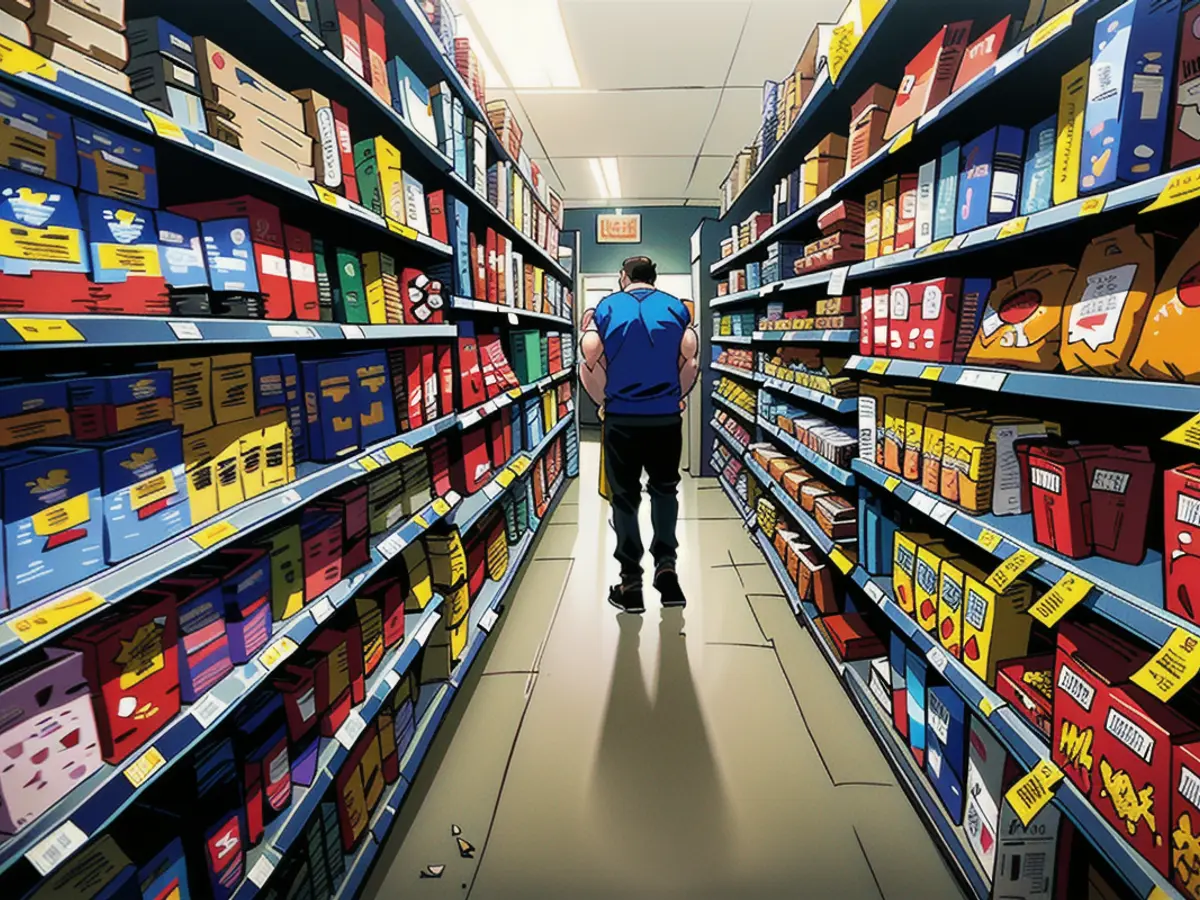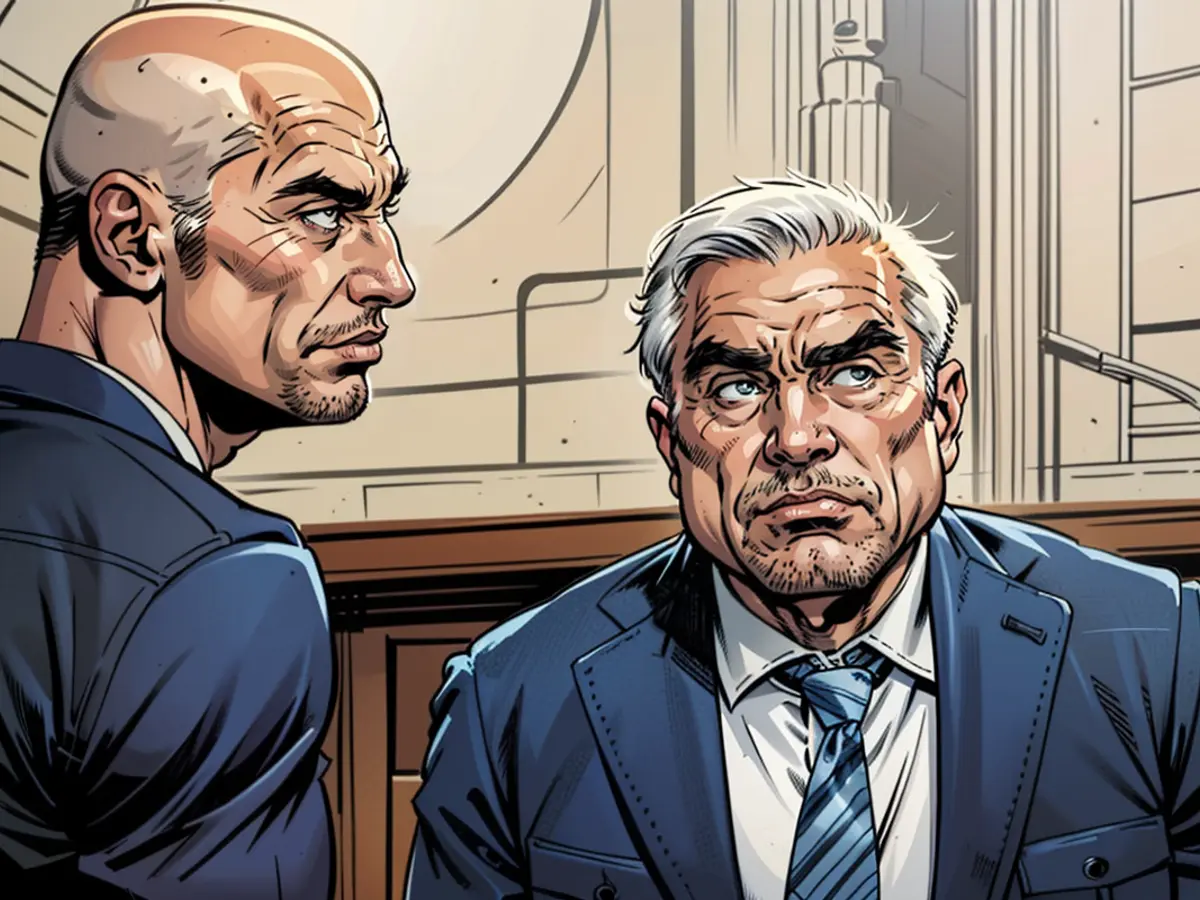High levels of consumer spending are masking an economy that isn't benefiting all citizens.
Previously published in CNN Business' Before the Bell newsletter. Want to receive this newsletter? Subscribe here. You can also listen to an audio version of the newsletter by clicking the same link.*
The main driver of the economy in the US is primarily the American consumer, who contributes around 70% to the overall Gross Domestic Product (GDP).
However, some experts now have concerns about the diverging pathways of the US economy. Some businesses and consumers continue to flourish, while others struggle.
The present state of economic activity in the US remains robust, but there are some indications that the vigor is beginning to slow down. The unemployment rate climbed to 3.9% last month, lower-income households are spending less, companies are trimming employee working hours and wages, and overall consumer growth is moderating smoothly.
"Consumer spending in general is decelerating, but it may mask more severe financial problems faced by the bottom three income quintiles, experiencing a tough blend of rising prices, higher interest costs, and softening job prospects," said Greg Daco, EY's chief economist, in a note on Tuesday.
On an optimistic note, consumer balance sheets are holding steady. Since the beginning of 2020, the US has witnessed a rise of $40 trillion in wealth, and Americans haven't lost their spending appetite.
Yet, not every balance sheet is in the positive. The economy separates into two distinct segments: one for those who've gotten ahead, and the other for those still struggling.
"The economy is divided between the haves and the have-nots, as middle-class Americans battle rising prices and stagnant wage growth," said Skyler Weinand, the chief investment officer at Regan Capital.
This season of earnings provides evidence of the evolving divide. McDonald's (MCD) has observed that all income strata are in search of value. Starbucks (SBUX) noticed that customers are becoming more selective about where they spend their money. Mondelez (MDLZ) highlighted an increase in cost sensitivity in their earnings call.
A Santander Bank survey of its customers discovered that while inflation fears have mostly dissipated, middle-income Americans predict a recession happening within the next 12 months. And 62% of them are reducing their household spending significantly.
As Nanette Abuhoff Jacobson, a global investment strategist at Hartford Funds, put it: "It's well-known that the lowest income consumer is really struggling with inflation, but from a purely economic viewpoint, it's the higher income earners who do the most spending."
The significance lies in the various forms of recessions. Some thought that the US has experienced a "rolling recession," in which only niche sectors of the economy are affected. Meanwhile, other recessions are less friendly to lower-income individuals.
A "K-shaped recession" occurs when diverse segments of society are affected by and recover from economic downturns at different rates.
Arguably, the recovery from the 2020 recession could be described as "V-shaped." However, many pointed out that it was in fact a two-sided recovery. Black and Hispanic families who are low-income saw the quickest depletion of their savings during the pandemic, for instance.
Those who held white-collar jobs recovered quickly, with stimulus payments and a surge in the stock and housing market. Jobs with the lowest wages were the most likely to lose employees between 2020 and 2021, according to data from the Bureau of Labor Statistics.
The perspectives of these hard-pressed families are sometimes buried in data painting a broader picture of a steady economy.
"The bifurcated economy will lead to mixed fortunes for some businesses and hardships for others," Daco said. "It will also generate conflicting inflation signals, with certain sectors experiencing steep deflation while others endure persistent, elevated inflation."
This could make it challenging for Federal Reserve officials to determine the best course of action in their forthcoming policy meetings. If monetary policy is too strict, it could rapidly worsen financial conditions, observed Daco.
"This, along with growing concerns about the country's financial direction, may result in businesses and consumers cutting back on spending and investment."
Stocks of the company took a hit following Dimon's statement, closing 4.3% down on the day.
Bank of America analysts noted that it will likely take some time for investors to feel at ease with the next CEO, as seen through Monday's stocks' behavior. Dimon has been a standout leader, delivering remarkable returns for shareholders while guiding the bank through various serious economical crises.
The analysts predict that Dimon may step down around late 2025 or 2026, though JPMorgan's succession strategy has been a topic of discussion on Wall Street for quite a while.
Earlier this year, some high-ranking executives at the bank were moved to different positions, intended to widen their experience. Lake now heads the entire consumer division after previously managing it together with Piepszak. Piepszak, in turn, leads the bank's combined commercial and investment bank, along with her co-CEO Troy Rohrbaugh, who used to serve as the head of the bank's trading and securities services.
Potential contenders for Dimon's position include Mary Erdoes, head of asset and wealth management, CFO Jeremy Barnum, and president and COO Daniel Pinto.
During his absence two years ago due to "acute aortic dissection," [a severe tear in the inner lining of the aorta blood vessel that required surgery], co-COOs Gordon Smith and Daniel Pinto took charge of the company. However, Smith retired in January this year.
Microsoft makes a play to make PCs popular again with new AI-powered computers
At its annual developers conference in Redmond, Washington, Microsoft announced a major shift towards integrating AI directly into its Windows operating system on Monday, unveiling AI-packaged computers to possibly rekindle waning PC sales.
Nadella, the CEO, stated, "We're really close to this breakthrough of building computers that understand us, versus us having to understand computers."
These new AI-powered computers, consisting of a Surface Pro tablet and Surface laptop, contain processors fitted to facilitate advanced AI tasks. The corporation aims to boost PC sales and reinvigorate interest, considering the growing significance of AI in our daily lives.
Microsoft's recent lineup of Copilot+ PCs utilize OpenAI's latest GPT-4 technology, which strives to transform ChatGPT into a digital personal assistant capable of chatting live and interacting via text and imagery. Introduced last week, GPT-4 can process uploaded photos, screenshots, documents, or graphics and hold a conversation about them.
Furthermore, the new hardware emphasizes Microsoft's existing AI helper called Copilot, which is implemented across different products such as Bing and Microsoft 365. Copilot assists users with tasks like writing, keeping tabs on emails in Outlook or designing slides in PowerPoint.
Read more here. https://abcnews.go.com/Business/microsoft-launches-ai-powered-pcs-revive-flagging-sales/story?id=96777053
Read also:
- Lack of snow also opens up new opportunities for winter tourism
- Abrupt end to e-car subsidies
- The chemical industry has little confidence
- Intersport boss hopes for sales boom through sporting events
Source: edition.cnn.com








